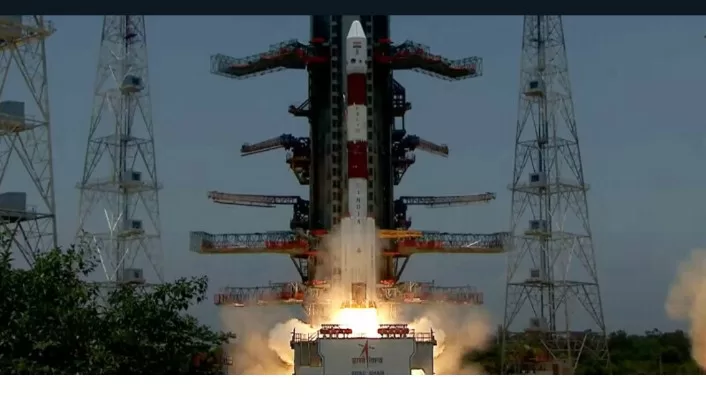Following its triumphant lunar landing, India’s esteemed space agency, the Indian Space Research Organisation (ISRO), orchestrated a momentous rocket launch on Saturday, marking its inaugural foray into solar exploration.
As the rocket ignited, leaving a resplendent trail of smoke and fire, jubilant scientists bore witness, with nearly half a million viewers worldwide tuned into the live broadcast via ISRO’s official website. Concurrently, a throng of enthusiasts assembled at a designated viewing gallery adjacent to the launch site, eagerly observing the ascent of the probe.
The primary objective of this ambitious undertaking, christened ‘Aditya-L1’ after the Hindi term for the sun, is to meticulously scrutinize solar winds—an astrophysical phenomenon renowned for its potential to incite terrestrial disturbances, manifesting as the mesmerizing auroras.
This momentous endeavor arrives on the heels of India’s groundbreaking achievement, wherein it bested Russia in a lunar race, becoming the first nation to achieve a successful south pole moon landing. While Russia possessed a mightier rocket, India’s Chandrayaan-3, displaying remarkable resilience, outperformed Luna-25, executing a flawless lunar touchdown.
The Aditya-L1 spacecraft’s intricately devised trajectory involves traversing approximately 1.5 million kilometers (930,000 miles) over a span of four months, culminating in a designated celestial parking lot. Positioned within gravitational equilibrium points, commonly referred to as Lagrange Points, this maneuver serves to minimize fuel consumption, a feat akin to the renowned Italian-French mathematician Joseph-Louis Lagrange.
Eminent scientists and space enthusiasts anticipate that the Aditya-L1 mission holds the potential to revolutionize scientific knowledge. Notably, it aims to elucidate the ramifications of solar radiation on the myriad of satellites ensconced in Earth’s orbit—an increasingly vital concern as global private entities proliferate, exemplified by Elon Musk’s SpaceX and its ambitious Starlink communications network.
Dr. Somak Raychaudhury, an integral figure in the observatory’s development, lauds the mission’s significance, highlighting the vulnerability of satellites to solar phenomena. He cites past instances wherein critical communications infrastructure succumbed to the brunt of massive corona emissions, underscoring the mission’s paramount importance.
Furthermore, the mission aspires to unravel the enduring mysteries surrounding the sun’s influence on terrestrial climate patterns and the origins of the enigmatic solar wind—a scientific puzzle that has intrigued ISRO scientists.
In alignment with Prime Minister Narendra Modi’s vision, India has ventured into the privatization of space launches, with an eye on foreign investment influx. As it sets an ambitious trajectory, aiming for a quintuple expansion of its global launch market share over the next decade, India seeks to establish its eminence in the international space arena, where commerce and exploration converge seamlessly







